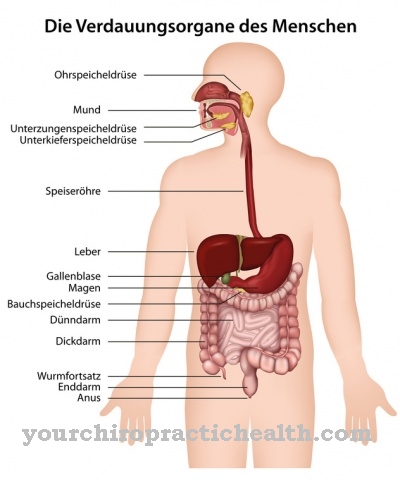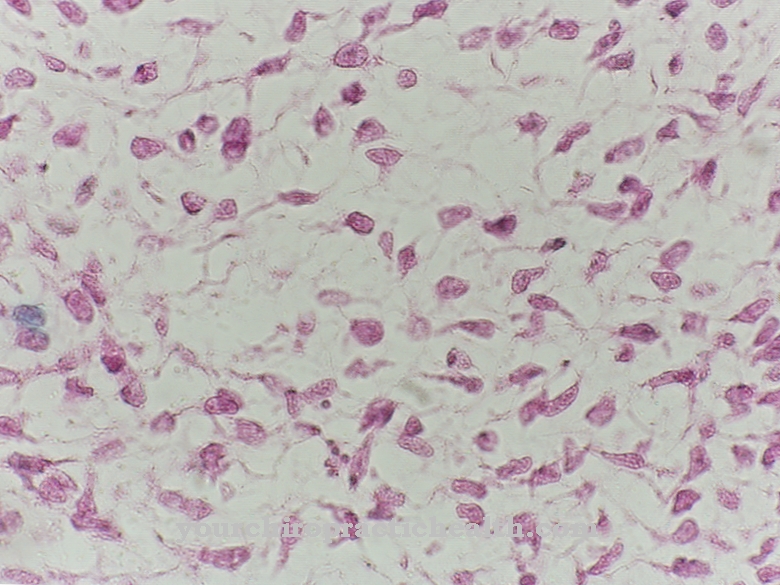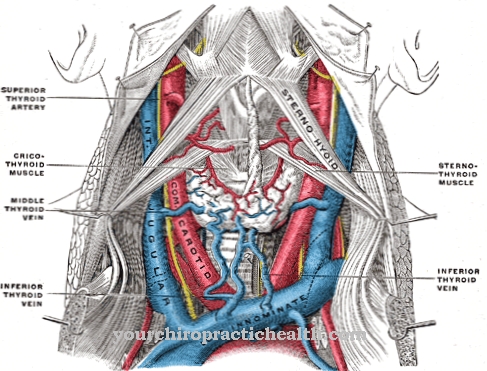Ever since humans rose above monkeys and found their way upright, the human foot has become extremely complex and functional. The foot consists of the tarsus, the five toes, the metatarsus and the one located there Sole of the foot.
The latter has receptors that function as the sense of touch. Touch, pressure, pain or temperature are felt particularly intensely there, even more than on the five toes. This is a tactile perception that is part of the sense of touch.
What is the sole of the foot?
The sole of the foot forms the entire lower surface of the foot. The bony basis is formed by metatarsal bones. There she has a surface sensitivity that serves to protect the body.
This rapid perception of changes and touch is possible through the mechanoreceptors in the skin. Meissner, Vater-Pacini and Ruffini corpuscles and Merkel cells convey the information via nerve fibers in the direction of the central nervous system. Often times, due to the many nerve endings that lie in the sole of the foot, people's feet are ticklish.
The pain and thermoreceptors are responsible for pain and temperature changes. They are mediated by class C afferents via the nerve endings. If there is a disorder or damage to these nerves, anesthesia or paresthesia occurs. In addition to the state of insensibility and the state of discomfort, there is also hypersensitivity, which can lead to painful sensations. This is then referred to as a tactile defense. The skin reacts to stimuli received through this defense.
Anatomy & structure
In biology, the sole of the foot is divided into the heel, the outer edge of the foot, the longitudinal arch area and the ball of the foot. All these areas can be seen in a footprint in the sand. Medical diagnoses can be made from the imprint, e.g. whether someone has flat feet or not. The ground contact is usually not made over the entire sole of the foot. In a healthy foot, the inner edge of the foot does not rest in the area of the longitudinal arch.
The relief of the sole of the foot has a strong ball of the heel in the back area, a ball of the ball with the ball of the little toe and the ball of the big toe in the front area. The concave arch of the foot lies between the soft tissue protrusions. The sole of the foot has a substructure that consists of fat, but is also so stable that people do not slip as soon as they move. These fatty bodies absorb shocks and have a cushioning effect. The muscles, the skeleton and other anatomical features cannot be felt through this cushion. The exception are the metatarsal heads of the rays in the middle.
Under the entire skin of the sole of the foot, there is a fibreboard called the plantar fascia. The term “planta” is the Latin term for the sole of the foot. The skeleton of the feet, muscles, skin and plantar fascia are connected by fibers and form a functional unit.
Function & tasks
In the past, the shoe size was determined by a pedoscope. The foot in the shoes was x-rayed in shoe shops. In orthopedics, the foot is examined with the help of a podoscope. This device can diagnose foot damage, posture anomalies or general weaknesses.
A digital pedography can document and display the pressure load, which both facilitates the diagnosis and enables the necessary therapy. This means that stress points and human foot reaction forces are recorded dynamically and statically. To do this, the patient is placed on a glass platform that has a mirror and a scanning system so that a foot pressure analysis can be performed. Therapies for correct movement sequences can be planned from the measurement results. In turn, the mirror enables the patient to visually check their own foot and adapt it to the given movement pattern.
There are also special acupressure points on the sole of the foot that can be massaged. This form of therapy is one of the eastern healing methods, which stimulates the body's self-healing through a foot reflex zone massage, causes relaxation and promotes the entire blood circulation. The Eastern healing process is based on energy meridians in the foot, which can be stimulated and should lead to an energy boost. It also relieves pain or eliminates cramps. Acupressure is also said to help against bladder problems, loss of appetite or hemorrhoids.
Diseases
Since the feet are used almost constantly and are exposed to high levels of stress, pain on the soles of the feet is more common. These can also lead to serious illnesses or inflammations and require therapeutic help.
The pain in the sole of the foot is rarely associated with injuries, but rather expresses itself as a painful tingling sensation in the foot or a widespread pain. There are also selective pressure pains that can occur and thus provide information about the cause of such complaints. Such can e.g. B. vascular diseases, fractures, torn ligaments or sprains.
Gout, rheumatic diseases, osteoarthritis or osteoporosis also lead to foot pain. The high pressure load leads to circulatory pain and affects the nerves and nerve endings. Complaints arise from pinching the nerve tracts in the section between the sole of the foot and the central nervous system. An emergency signal is sent to the brain, which is expressed by a strong pulling or tingling sensation in the foot. Accompanying symptoms include a. Lower back pain or numbness in the legs.
Pressure pain on the heel bone, on the other hand, is usually an inflammation of the plantar fascia. The entire tendon plate of the foot is affected. The pain radiates to the metatarsophalangeal joints. The misalignment of the feet also causes an unfavorable distribution of body weight and can lead to pain.




























